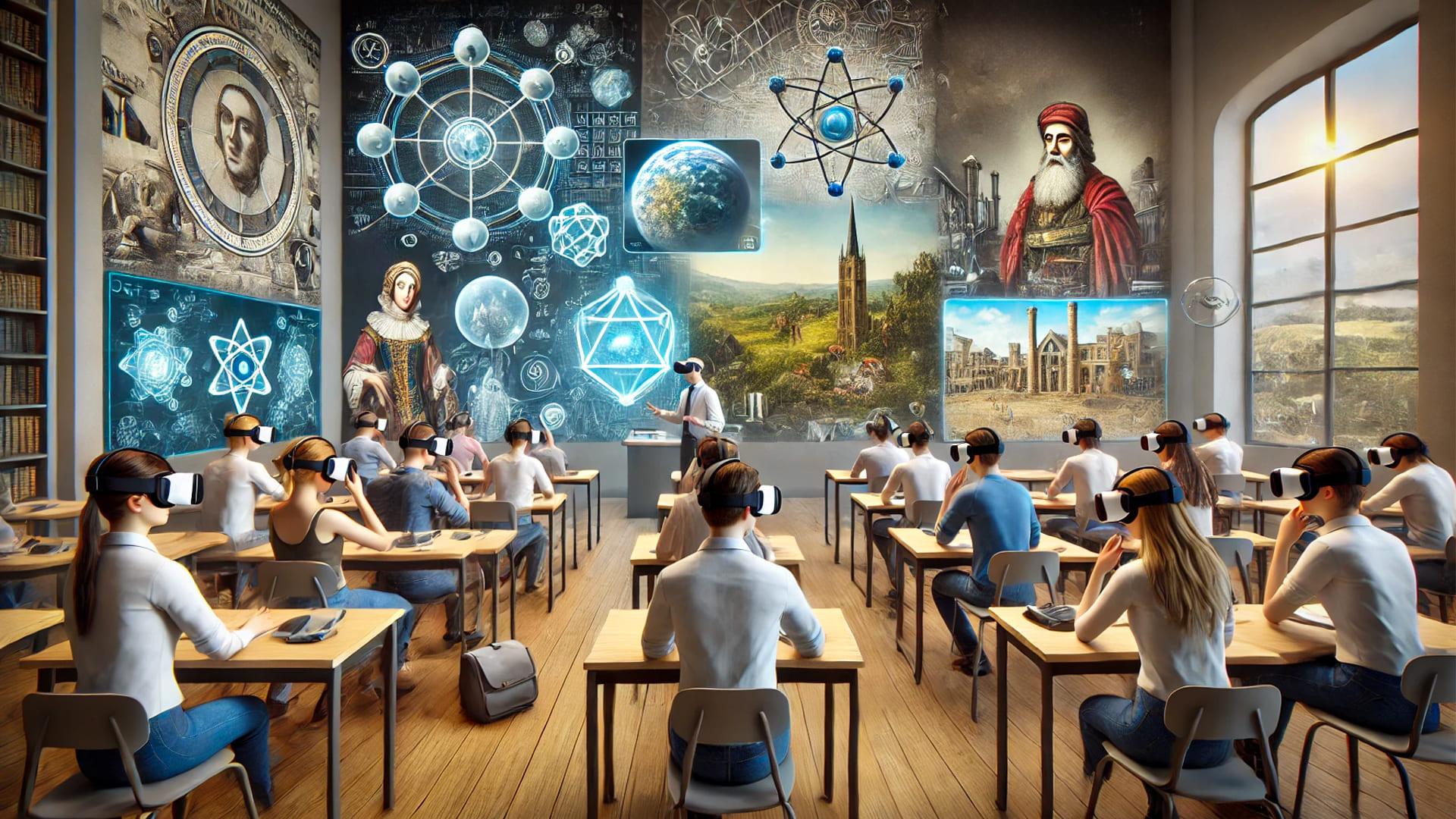Revolutionizing Education: How Immersive Learning with VR/AR is Transforming the Classroom
in a rapidly evolving world, educational institutions face mounting pressure to adapt and prepare students for the challenges of tomorrow. Enter immersive learning: harnessing the game-changing capabilities of Virtual Reality (VR) and Augmented Reality (AR) to elevate the classroom experience beyond textbooks and static lessons. This innovative approach is not just making education more engaging—it’s fundamentally reshaping how students absorb,interact with,and retain knowledge.
Understanding Immersive Learning: What is VR/AR in Education?
Immersive learning refers to teaching strategies that use digital environments to fully engage students by simulating real-world scenarios and hands-on experiences. Virtual Reality (VR) places learners inside a wholly digital environment using special headsets. Students can, for example, walk the surface of Mars, dive into the human bloodstream, or explore historical landmarks as if they were physically present.
Augmented Reality (AR), on the other hand, overlays digital content—like 3D models, animations, and additional information—onto the real world using devices such as tablets, smartphones, or AR glasses. This groundbreaking technology turns ordinary classrooms into interactive labs where learning comes to life.
why VR and AR are Revolutionizing the Classroom
- enhanced Engagement and Motivation: VR/AR turns passive learning into active exploration, making lessons far more engaging and memorable.
- Improved Knowledge Retention: Studies show that immersive learning environments boost retention rates because students “learn by doing.”
- Accessible, Inclusive Learning: These technologies can adapt to different learning styles, help break language barriers, and allow physical or sensory accommodations.
- Safe Exploration of Complex Subjects: Students can safely perform virtual chemistry experiments, conduct dissections, or practice emergency procedures without real-world risk.
- Scalability and Personalization: With AR and VR, educators can tailor content to individual learning needs and scale resources more efficiently then with traditional materials.
key Benefits of Immersive Learning with VR/AR
1. Deepened Conceptual Understanding
immersive learning bridges the gap between theory and practice. For instance, a student studying the structure of atoms can manipulate 3D models in virtual space, aiding deeper comprehension compared to 2D textbook diagrams.
2. Increased Collaboration and Social Learning
Shared VR environments support collaborative activities, such as virtual field trips or group problem-solving sessions, helping students develop critically important teamwork and interaction skills.
3. Immediate, Real-Time Feedback
Interactive VR/AR applications can provide instant feedback, allowing students to correct mistakes and reinforce learning in the moment.
4. Breaking Geographical Barriers
Virtual classrooms enable students from around the world to connect and learn together, democratizing access to quality education and expert instructors.
5. boosted Creativity and Critical Thinking
By immersing students in simulation-based scenarios, VR/AR fosters creative problem-solving and decision-making skills—essential for success in the 21st century.
Real-World Case Studies: Immersive Technology in Action
- Case Study 1: Stanford Virtual Heart (USA)
Medical students at Stanford University use the “Virtual heart” VR app to explore cardiac function in 3D, walk inside a beating heart, and manipulate it’s anatomy. This hands-on experience transforms how future doctors learn complex medical concepts.
- Case study 2: AR Biology Lessons in UK Schools
Multiple UK primary schools are employing AR apps to project 3D images of plant and animal cells onto desks. This enhances visual understanding and enables interactive quizzes with instant feedback.
- Case Study 3: Google Expeditions Virtual Field Trips
Over a million students have “traveled” to the Great Wall of China, the ocean depths, outer space, and more, through Google Expeditions’ VR platform—making global exploration accessible from any classroom.
- Case Study 4: Training Future Engineers in Germany
Technical universities in Germany use VR to simulate operating complex machinery, allowing engineering students to practice and make mistakes in a zero-risk environment.
First-Hand Experiences: Voices from the New classroom
Many educators and students now see immersive learning as a transformative force in their academic journeys.
“As soon as my students put on the VR headsets, their eyes lit up. Even the most disengaged learners participated eagerly. It’s a teaching moment you can’t replicate with any other tool.”
—Ms. Sarah Lee, Middle school Science Teacher, California
“I never thought history could be exciting until I visited ancient Rome in VR. It felt like time travel—the Colosseum was all around us!”
—James, 10th Grade Student
Practical Tips for Integrating VR/AR in the Classroom
- Start Small: Begin with simple AR mobile apps or affordable 360-degree videos before scaling up to advanced VR systems.
- Align with Curriculum: Choose VR/AR experiences that directly support your learning objectives for maximum relevance and impact.
- Emphasize Safety and Inclusion: Offer alternatives for students prone to motion sickness or with specific accessibility needs.
- seek Out Free or Low-Cost Resources: Platforms like Google Expeditions, Merge EDU, and Quiver offer free or budget-pleasant educational content.
- Train Educators: Provide teachers with hands-on training, best practices, and ongoing support as they integrate immersive technology into their teaching.
- Promote Responsible Digital Citizenship: Teach students about etiquette, privacy, and safety in virtual spaces.
The Future of Immersive Learning: What’s Next?
As VR/AR technology matures, costs continue to decrease while device quality and content offerings expand. Expect to see AI-powered adaptive learning, multi-user shared VR classes, and seamless integration with traditional teaching methods. The classroom of the future is immersive, interactive, and limitless in its potential.
Conclusion: Embracing a New Era in Education
Immersive learning with VR and AR is not just a passing trend—it’s a profound leap forward in educational innovation and inclusivity. By bridging the gap between knowledge and experience, immersive technologies motivate and inspire students, boost academic outcomes, and prepare the next generation for a world in constant flux. Educators who embrace these tools today are unlocking a future where every student can thrive. Ready to revolutionize your classroom? Step into the world of immersive learning and unleash the power of VR/AR.

